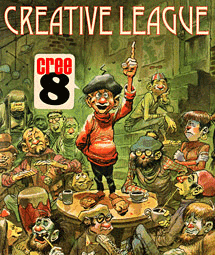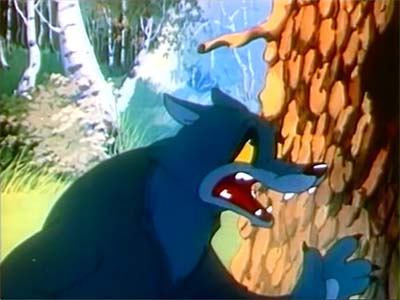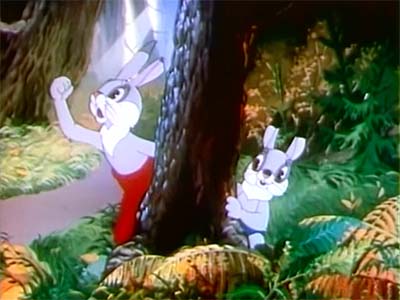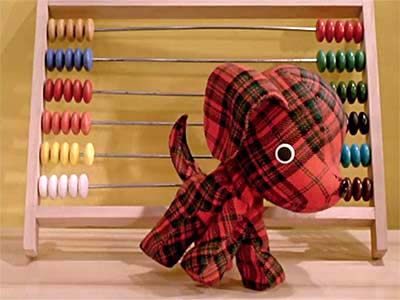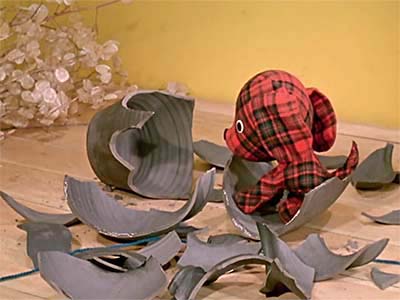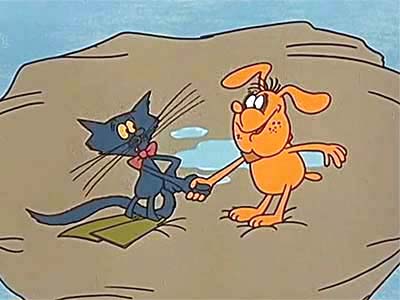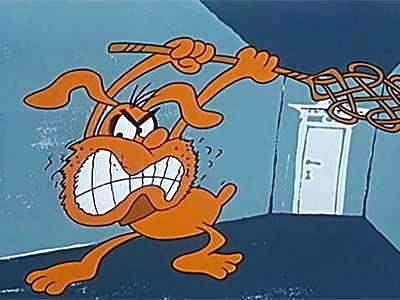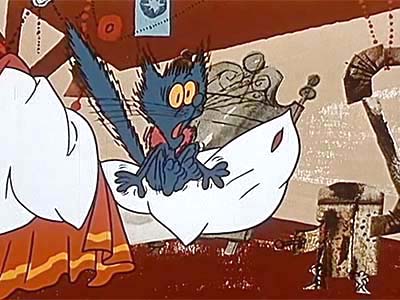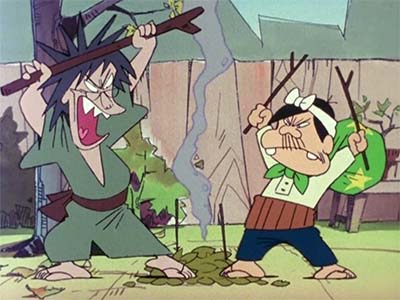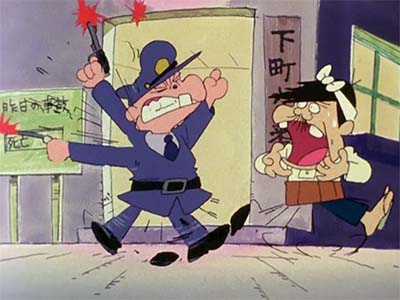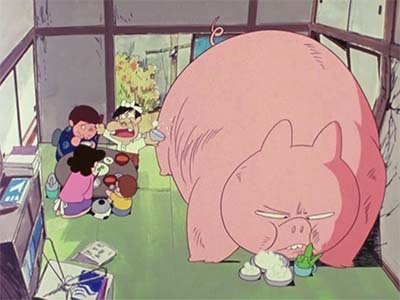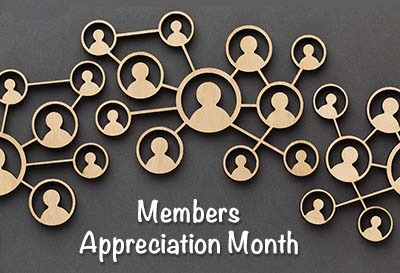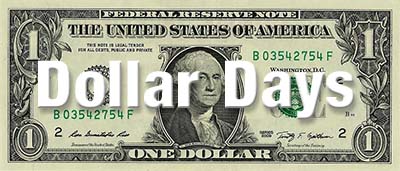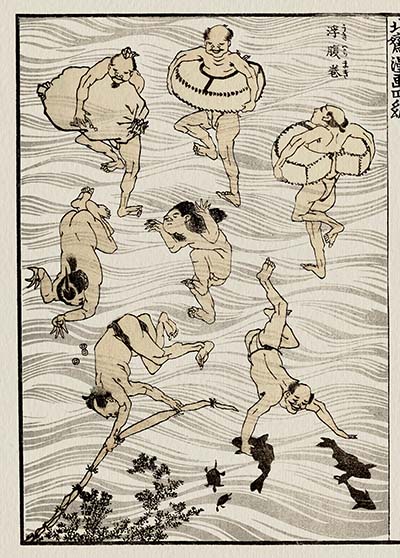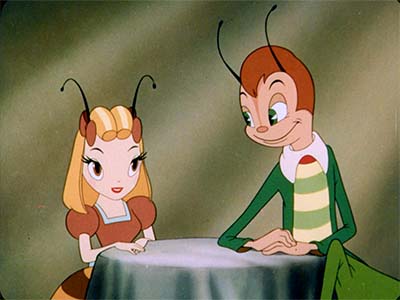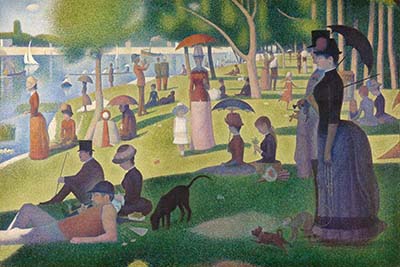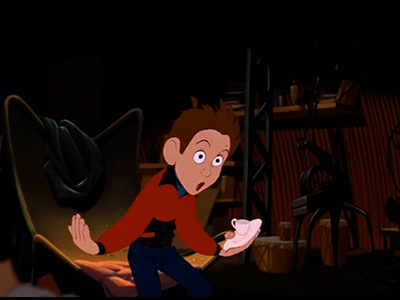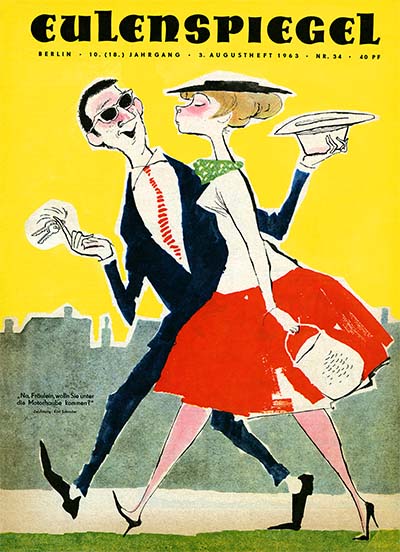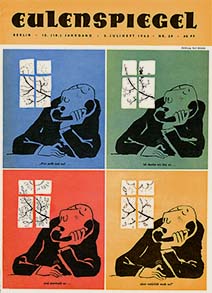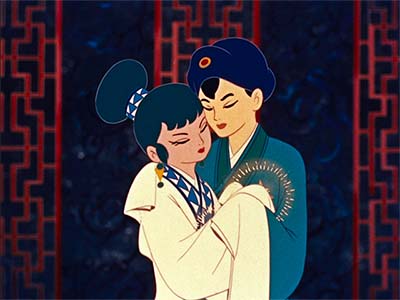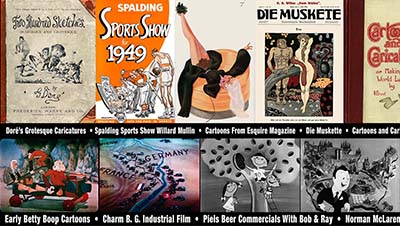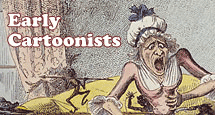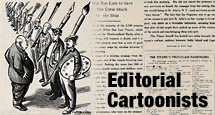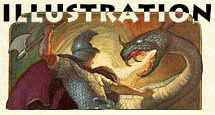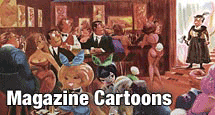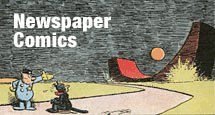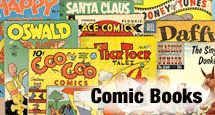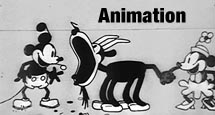People who aren’t members of Animation Resources don’t understand how comprehensive our Reference Packs are. If you are a member of Animation Resources, click on this post to go to the Members Only page. If you aren’t a member yet, today is the perfect time to join! Our current Reference Pack is one of our best yet, and General and Student Members get access to a special Bonus Archive with even more material from past Reference Packs.
What are you waiting for?![]()
JOIN TODAY!
https://animationresources.org/membership/levels/

The world of animation is much bigger than it might appear to us at first glance. We are all familiar with the films we grew up with, but Hollywood wasn’t the only place that produced great cartoons… Poland, Japan, Russia, China and Europe all have their own traditions and a rich history of animated film making. Animation Resources’ archive contains many foreign films that are rarely seen in the United States. We feature a sampling of interesting animation from around the world in each Reference Pack.
JOIN TODAY To Access Members Only Content
SD VIDEO:
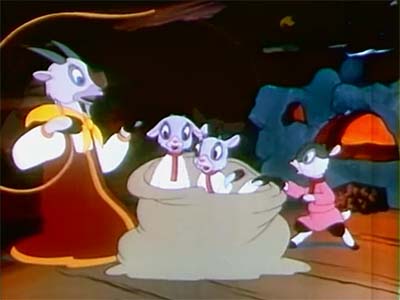
The Wolf & The Seven Kids
![]()
Pyotr Nosov / Souyzmultfilm / Russia / 1957
Download this article
In the past, Animation Resources has shared a few films by pioneering Russian animator, Pyotr Nosov. In our last RefPack, we featured “New Year Night” (1948), which he co-directed with Olga Khodatayeva. Nosov was born in 1907 and studied cinema at the Kiev Art Institute. His first animation credit was in 1931, alongside Lev Atamanov, (The Snow Queen). From 1934 to 1942, he was a cartoonist and illustrator for the Russian caricature journal, Krokodil as well as various children’s books over the years. He worked at Soyuzmultfilm as an animator and designer before being promoted to the director’s chair in 1943.
The film we are sharing today, “The Wolf And The Seven Kids” was based on a Russian fairy tale designed to teach children to be wary of strangers. The film has a great deal of dialogue, but it can be followed by a non-Russian speaker if you know the basic plot.
Once upon a time, a mother goat needed to leave the house to attend to an important errand. Concerned for the safety of her children while she was gone, she told them not to open the door to anyone but her. She taught them a little song and promised to sing the song to them through the door so they know it’s her. A wicked wolf who was a thief and bully overheard her speaking to her children and after the mother left, he sang the song to them. They recognized that the wolf’s growl was not their mother’s voice and refused to open the door. The wolf asked a blacksmith bear to help him create a thin singing voice. (It isn’t shown exactly how the bear accomplished this in the film, but it involved hammering a part of the wolf’s anatomy on his anvil!)
The wolf used his new voice to trick the little goats into opening the door and chased them through the house shoving them into a burlap sack. One little goat hid in the oven and when his mother returned, he told her what happened. Heartbroken, they searched the forest for the missing children. The forest animals led her to the wolf’s lair, and when the wolf left to fetch water, she snuck in and freed her kids from the sack. They filled the sack with bricks and hid when the wolf returned. The forest animals saw the danger and ran to the bear to tell him what the wolf had done. He became angry and rushed to punish the wolf. The wolf grabbed the bag of bricks and ran, falling into a stream and drowning under the weight of the bricks. The bear, goats and forest animals danced and sang happily.
I think you’ll be impressed at the high quality of the animation and backgrounds in this film. It’s amazing that films like this are virtually unknown in the United States. We will have more great Russian animation in upcoming RefPacks.
MP4 Video File / 10:22 / 173 MB Download
The Little Checkered Dog
![]()
Sophia Oldak / Studio Miniature Filmowych / Poland / 1968
Occasionally, I’m called upon to write about a film that I know very little about. This is one of those cases. This charming film was directed by Sophia Oldak for the Polish animation studio, Studio Miniature Filmowych in 1968. I have been told that this is the first of three films featuring the little checkered dog, but I can’t find the other two films.
The thing that appeals to me about this film is its simplicity. It doesn’t try to be fancy, with complicated animation, elaborate stop motion armatures, and richly detailed backgrounds. It tells a story on a child’s level simply, and with a great deal of appeal.
One of the things that surprised me in this film was when a hand puppet was used in place of the stop motion dog. I would never have thought to do that myself… I would assume that if you are making a stop motion film, it should be all stop motion. But the change in technique works perfectly. It adds a little personality that is easy to accomplish in puppetry, but can be complex to achieve in animation. It reminds me that making a film isn’t about working hard, it’s about putting across a character simply, with a maximum of personality.
MP4 Video File / SD / 7:55 / 124 MB Download
JOIN TODAY To Access Members Only Content
Dog, Cat And… Ep 06
![]()
Leszek Komorowski / Studio Miniatur Filmowych, Poland / 1972
In this Reference Pack, we are sharing another short cartoon from a series produced by Studio Miniatur Filmowych, Pies, Kot I… which translates to Dog, Cat And… The episode is titled “Stove”.
This series is a different sort of take on the Tom & Jerry model, with the opponents outsmarting each other instead of just chasing each other out of hate or hunger. There is more to the relationship between the characters than just rivalry. The relationship of the characters makes it easy to see how it relates to slapstick comedy teams like Laurel & Hardy and Fatty Arbuckle and Buster Keaton. The dog and cat are not just generic animals, but individual personalities with a dynamic relationship that is much more engaging than most “cat and mouse” or “dog and cat” cartoons.
These cartoons are almost devoid of dialogue with the focus on loose, funny animation. In fact, the drawings are often hilarious on their own, even removed from their context within the gag sequence. The facial expressions are well observed, and the poses employ clear silhouettes that form funny graphic shapes.
Well, Just You Wait!, and Dog, Cat And… both are very efficient at what they do. They could easily serve as a model for internet animation. The internet encourages repeat viewing more than television does. When you watch a dialogue driven cartoon on TV, once you’ve heard the jokes, you don’t need to watch it again. However, a short cartoon that looks and moves funny is entertaining no matter how many times you watch it. And for the animator who is making the cartoon, it’s a lot more fun to animate simple funny characters than it is to animated a lot of tedious lip-sync.
Dog, Cat And… looks like it was a lot of fun to make. The film makers at Studio Miniatur Filmowych didn’t feel constrained by the ordinary lives of animals. Their characters can drive cars, build their own houses and go to exotic places. That freedom allowed the animators to keep their series fresh, and gave them the opportunity to experiment within a 10 minute format. Simple drawings, funny movement and no rules… these are the kinds of series that would work well as episodic internet cartoons.
We will have more episodes from this series in upcoming Reference Packs.
MP4 Video File / SD / 07:55 / 188 MB Download
Ganso Tensai Bakabon Ep. 01 & 10
![]()
Hiroshi Saito / Tokyo Movie / Japan / 1975
Ganso Tensai Bakabon was the second series based on Fuji Akatsuka’s manga, debuting on October 6th, 1975. There were 103 half hour episodes produced by Tokyo Movie.
The characters are pretty typical to anime TV series at this time. Bakabon is a mischievous boy who causes problems for his dim witted father. Many of the stories involve Bakabon’s father coming up with crazy ways to accomplish a simple task, assuring everyone “It’ll be all right.” (It never ends up that way.) Bakabon’s younger brother is a genius, and his mother puts up with all the shenanigans like a good wife and mother. In the neighborhood is a strange neighbor and a hyperbolic cop, known to fire his guns indiscriminately when he’s angry.
The episodes I’ve selected to share involve a pig that is intended to be eaten for dinner, but no one has the heart to butcher him, so he grows to tremendous size… and an episode involving gangsters with lots of gunplay. But the stories really don’t matter. What matters is the drawings.
A lot of people believe the myth that there are 12 principles of animation. Nothing could be further from the truth. There are hundreds of principles, and animators with familiarity with all kinds of animated films know that. One of the principles that is used extensively in early TV anime is the use of exaggerated expressions. The technique involves creating impactful poses by exaggerating the facial expression to an absurd degree, while changing the proportions of the character to enhance the emotion being expressed. When a character expresses fear or surprise, their eyes can become huge and their head enlarges, their body becoming small with stubby legs and arms sticking straight out. A staggered pair of drawings often vibrates back and forth with a shocking sound effect. It’s easier to recognize than it is to describe, but if you’ve seen any early Japanese TV cartoons, you know what I’m talking about.
In “The Illusion of Life” Frank Thomas and Ollie Johnston laid down rules that have been accepted as gospel, even though there are thousands of examples proving them wrong. One of the most egregious examples is when they say that a the volume and proportions of a character in a “take” should never exceed the volume and proportion of the character at rest. Tex Avery’s wolf in the Droopy cartoons and Jim Tyer’s Mighty Mouse “shrink take” break this rule on a regular basis, and Japanese extreme expressions violate Frank and Ollie’s commandment with a lot of glee.
In Disney animation, personality was expressed by means of a lot of tight drawings of characters moving in S curves and performing subtle facial expressions with follow through and overlapping action. Sometimes it worked, but sometimes it just made a scene look like a lot of work. Japanese TV animation expresses a great deal of personality in an efficient way that looks like the animators were having a lot of fun. And isn’t that the point of animated cartoons? I hope you’ll consider adapting the use of extreme expressions for your own films, and add a thirteenth fundamental principle of animation to your list!
MP4 Video File / SD / 25:16 / 362 MB Download
REFPACK062: Ganso Tensai Bakabon Ep10
![]()
MP4 Video File / SD / 25:16 / 432 MB Download
JOIN TODAY To Access Members Only Content
For the past decade, Animation Resources has been serving artists working in the fields of animation, cartooning and illustration. Our volunteers and members have pulled together to raise the bar for our art form, and it’s time to celebrate… It’s Members Appreciation time again!
During the month of February, Animation Resources expresses our appreciation for to members with a very special Reference Pack, and we invite you to become a member too. For the next 30 days, we will be sharing reasons why you should join us. Our benefits of membership far exceed the cost of our annual dues.
This year, we are trying something new to encourage new memberships. You can join for a one week trial membership for only A DOLLAR! Yes, you get access to everything our annual members get for seven days for only a buck. (Click here for the details on our Dollar Days.) What are you waiting for?
You can find out what our members get at the Member Appreciation Page. It’s easy to join. Just click on this link and you can sign up right now online…
JOIN TODAY!
https://animationresources.org/membership/levels/
![]()
![]() Animation Resources depends on your contributions to support its projects. Even if you can’t afford to join our group right now, please click the button below to donate whatever you can afford using PayPal.
Animation Resources depends on your contributions to support its projects. Even if you can’t afford to join our group right now, please click the button below to donate whatever you can afford using PayPal.





